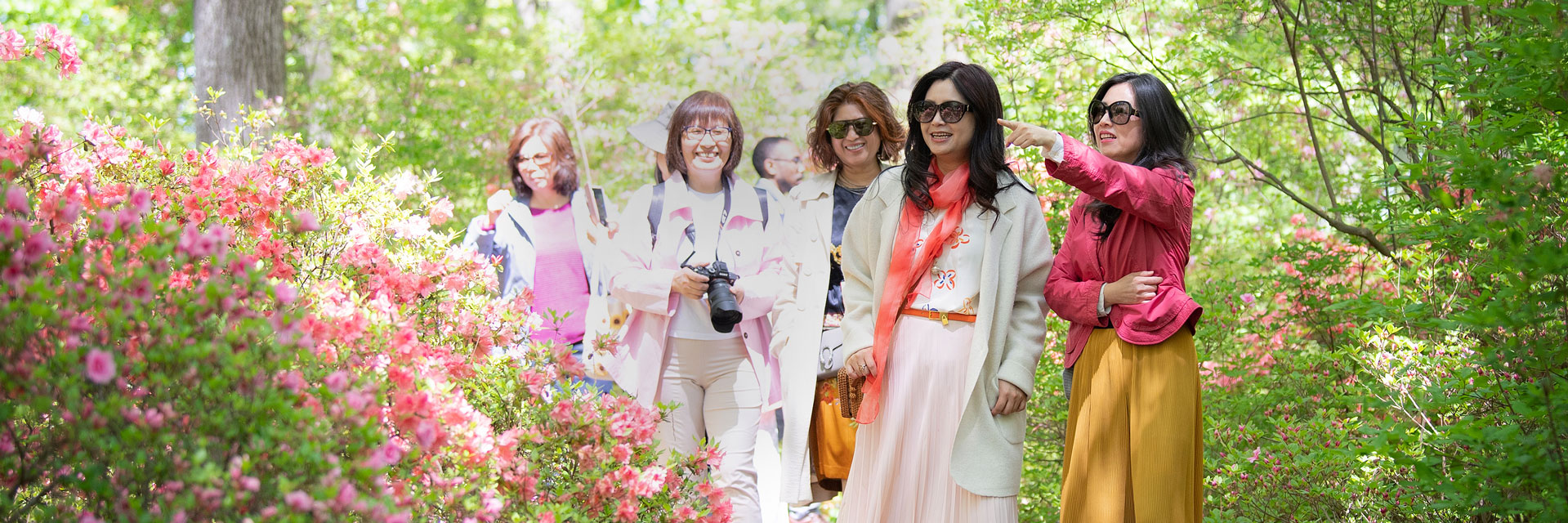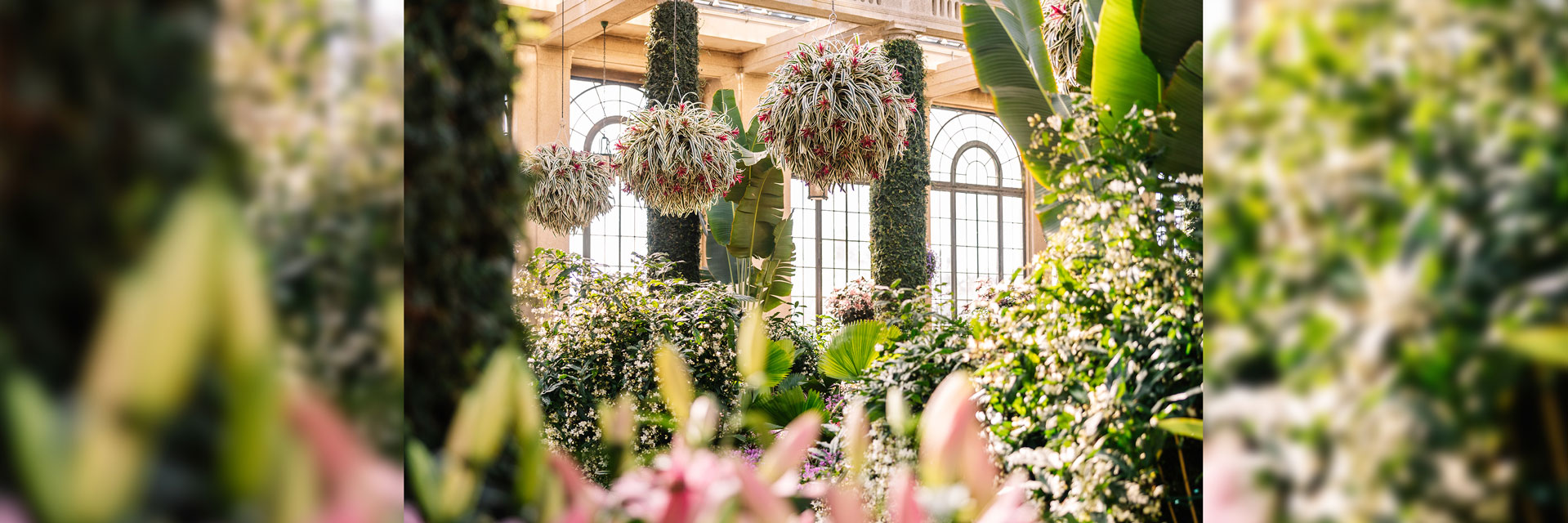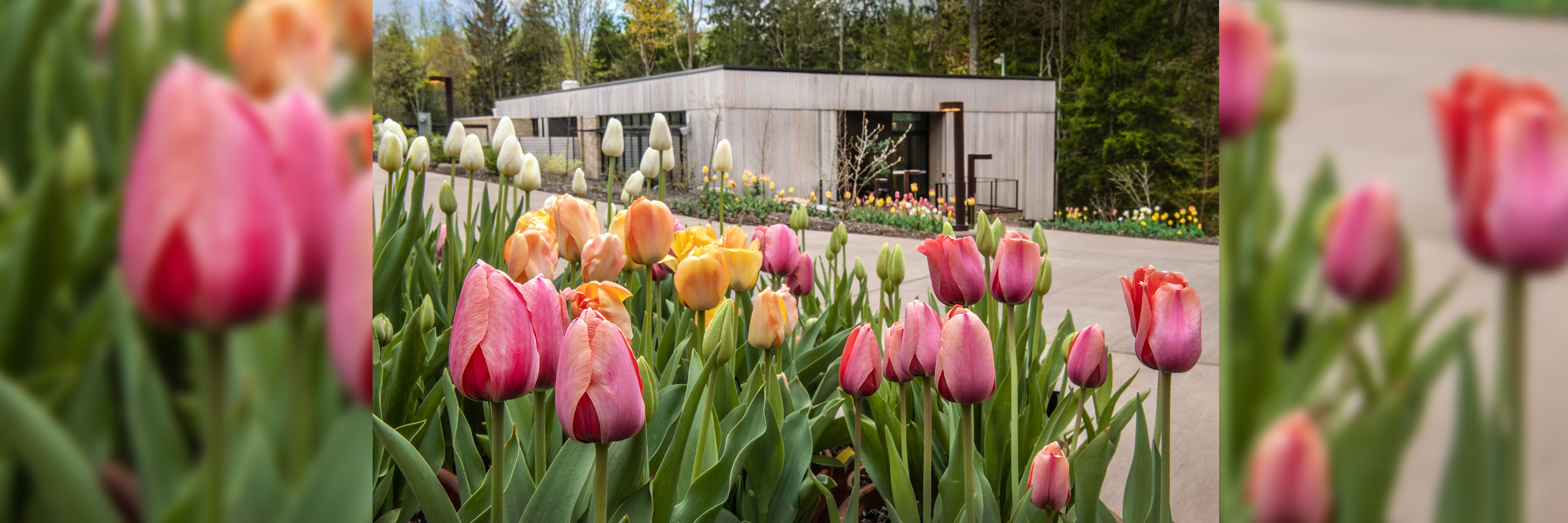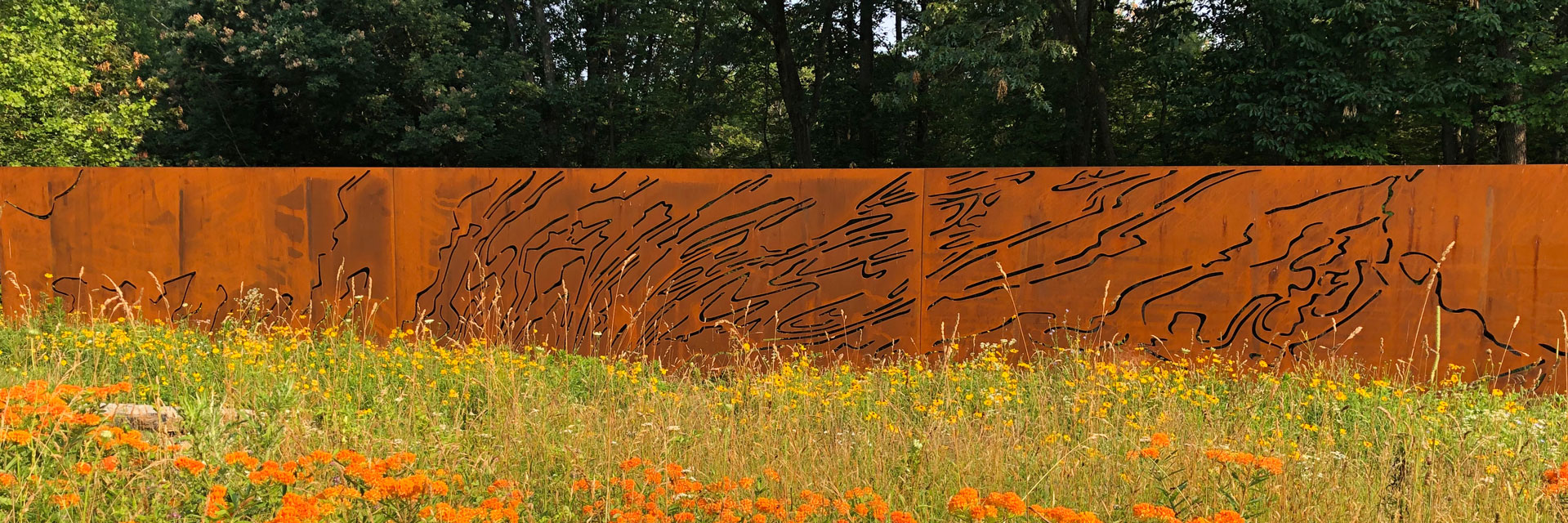Head to your nearest one for inspiration and education.
There are dozens of public gardens in Pennsylvania that welcome visitors and emphasize nature education. They are an important part of what makes the state such a special place for plant-lovers.
“We know the value of being outdoors in nature,” says Keith Kaiser, executive director of Pittsburgh Botanic Garden and active member of the Pennsylvania Public Horticulture Coalition (PPHC). “Just being outdoors in a beautiful, natural setting — it drops your shoulders and lowers your blood pressure.”
Pittsburgh Botanic Garden is actually one of PA’s newer public gardens. While several can trace their roots back to the Colonial era, this 460-acre space opened in 2015 on the edge of Allegheny County. The land had previously been used for farming, oil and gas drilling, and coal mining. The transformation of a brownfield into a showcase for the natural world mirrors a narrative being repeated across Pennsylvania as the state grows its commitment to green space and preservation.
“Our focus and mission is to connect people to plants,” explains Kaiser. They follow the philosophy that “Nature Nurtures.”
The network of public gardens continues to be strengthened in Pennsylvania and nationwide. The American Public Gardens Association website features a searchable map so you can find gardens near you.
The listing that follows represents the current members of the PPHC. There are 35+ public gardens across Pennsylvania. We encourage you to find public gardens near your getaway destination.
Allegheny Arboretum at IUP
Indiana
The 354-acre Indiana University of Pennsylvania campus doubles as a public arboretum, dedicated to the study and conservation of trees, shrubs, and vines. Visitors can enjoy shade from more than 1,200 trees from 104 different species, the most beloved being the Oak Grove, a cluster of mature trees along Oakland Avenue.
The Arboretum at Penn State
State College
The state’s flagship public university first set aside land for an arboretum back in 1914, but it wasn’t until 2009 that the H.O. Smith Botanic Gardens opened to the public. Featuring a children’s garden, pollinator and bird garden, and demonstration gardens, this incredible site continues to evolve, with 20 additional acres of cultivated gardens planned to augment 340 acres of woodlands and fields.
Awbury Arboretum
Philadelphia
Located in the Germantown neighborhood, Awbury Arboretum has been open to the public — free of charge — for more than 100 years. Comprising 56 acres of open space as well as several historic buildings that once housed a local Quaker family, this urban oasis offers a full slate of programming that emphasizes history, community engagement, and nature education.
Bartram’s Garden
Philadelphia
This waterfront public park in Southwest Philly boasts the oldest surviving botanic garden in North America, a boat launch, and Sankofa Community Farm, a 3.5-acre plot dedicated to exploring the experience of the African Diaspora through agriculture. It’s a great place to learn something new and also ideal for an afternoon spent on a picnic blanket, watching the Schuylkill River roll by.
Brandywine Conservancy & Museum of Art
Chadds Ford
Nestled in a bucolic corner of the state, this 15-acre campus is home to the Brandywine Museum of Art— housed in a renovated 19th century grist mill overlooking the Brandywine Creek — and features more than four miles of public trails and sprawling native plant gardens, meadows, woodlands, and wetlands. This land was saved from industrial development in the 1960s after locals rallied around the cause to purchase the site.
Chanticleer, A Pleasure Garden
Wayne
This is a gardener’s garden — a place to seek inspiration and see something new. Chanticleer employs seven horticulturists, each responsible for designing and planting their own area around themes such as Mediterranean gardens (Gravel Garden) and Asian foliage (Asian Woods). Take a class from one of their experts or simply set out for a romantic stroll through the flowers.
Hershey Gardens
Hershey
“Create a nice garden of roses.” That was Milton Hershey’s request in 1937. Since then, his three-and-a-half acre rose garden has grown into a 23-acre botanical garden featuring plants from around the world — including rare trees — a tropical butterfly atrium, and a children’s garden for when the little ones have had their fill of chocolate.

Jenkins Arboretum & Gardens
Devon
As a destination for education, conservation, and community connection, Jenkins Arboretum & Gardens celebrates the wonder of plants and place. The Arboretum maintains a collection of trees, shrubs, wildflowers, and ferns in a naturalistic landscape. In addition, the Arboretum features an accredited, world-class collection of rhododendrons and azaleas from across the globe, spread across 48 acres of gardens and woodland.
Laurel Hill Arboretum
Philadelphia / Bala Cynwyd
One 265-acre arboretum situated in two nationally designated historic cemeteries, Laurel Hill East and West has a collection of more than 6,500 trees and shrubs and spectacular views of the Schuylkill River. Experience this living collection alongside the majesty and history of the headstones — if you’re looking for quiet contemplation in the shade, there’s no better spot.

Longwood Gardens
Kennett Square
Revel in the beauty of the Brandywine Valley as you wind your way through almost 200 acres of formal gardens, meadows, trails, and greenhouses. While there is never a bad time to visit Longwood Gardens, the historic property comes alive during the winter holidays when a stunning light display draws big crowds. Opening in November 2024, visitors can explore an expanded, innovative garden experience with Longwood Reimagined.
Millbourne
York
This 50-acre private estate is now an established public garden. Visitors will enjoy an English inspired garden with perennial borders, stone structures including a grass covered stone arched bridge and two towers, and collections of Japanese maples, rhododendron and azaleas, and roses.
Morris Arboretum & Gardens of the University of Pennsylvania
Philadelphia
This large institution on the outskirts of the city opened to the public in 1933. These days, the official arboretum of the Commonwealth of Pennsylvania boasts more than 11,000 plants from across the world with a particular focus on native azaleas, conifers, hollies, magnolia species, maples, roses, and witch hazels. Sustainability and preservation are key values at this sprawling showcase for local horticulture.
Natural Lands
Media
Natural Lands has been preserving natural landscapes across the region since the 1950s. Their network currently features more than 40 nature preserves and Stoneleigh, a public garden (see below), comprising nearly 23,300 acres. Visit their website to find your closest green space, be it woodlands or a meadow full of wildflowers.
Pennsylvania Horticultural Society
Philadelphia
For almost 200 years, this nonprofit organization has helped make our state greener, healthier, and more connected. In addition to their world-famous Philadelphia Flower Show, they also manage public green spaces, urban community gardens, seasonal beer gardens, an arboretum at the Navy Yard, and a 25-acre gardens/estate in the suburbs of Philadelphia.
Philadelphia Zoo
Philadelphia
Come for the fauna, stay for the flora. America’s oldest zoo has committed to welcoming pollinators to its sprawling grounds in West Philadelphia. Keep an eye out for butterflies and bees among the native plants. And while taking in the wildlife, be sure to note the incredible plantings that make their habitats feel like home.
Phipps Conservatory & Botanical Gardens
Pittsburgh
Nestled in the city’s Oakland neighborhood, this 15-acre garden has a lot to offer. A 14-room greenhouse stays vibrant year-round — don’t miss the transportive desert section — while 23 distinct gardens showcase plants and flowers from around the world. Phipps also cultivates world-class orchids and bonsais, and hosts seasonal flower shows.

Pittsburgh Botanic Garden
Pittsburgh
In the context of this list, Pittsburgh Botanic Garden is new. Founded in 1988 as part of a mission to reclaim and revitalize an industrial stretch of land outside the city, it opened to the public in 2015 with a mission of connecting people through plants and an emphasis on the native landscapes of the Allegheny Plateau.
Scott Arboretum at Swarthmore College
Swarthmore
This liberal arts college’s lush campus is actually within a 425-acre arboretum. Boasting rolling hills, mature trees, and hiking trails, this publicly accessible green space provides connection to the stress-relieving and awe-inducing qualities of the natural world for students and visitors alike.
Stoneleigh: A Natural Garden
Villanova
Stoneleigh is one of Philadelphia’s newest public gardens, opening in 2018 after more than a century of care by three different families. Extraordinary trees, sweeping vistas, and intimate garden spaces offer opportunities to explore, learn, relax, and be inspired. Stoneleigh celebrates the beauty of native plants and the importance of biodiversity and is part of Natural Lands’ 23,000-acre network of conserved open space.

The Bower
Perry County
The Bower emphasizes the connection between art and nature with the interplay of large-scale sculpture and bucolic native plant landscape. The 36-acre garden is free to visit and boasts woodlands, open meadows, and creative installations ready to intrigue and inspire.
Tyler Arboretum
Middletown Township
This property has quite the history — with a strong Lenape connection followed by the Quakers that purchased the land from William Penn. In 1944, Tyler became a public garden and in the coming decades the collection grew to include magnolias, cherries, crabapples, lilacs, conifers, and rhododendrons. Today, visitors can enjoy educational programming, hiking trails, a meadow maze, tree houses, and pollinator gardens.
Lee Stabert is a writer and podcaster with an expertise on all things Pennsylvania. For over a decade, she has served as chief editor of Keystone Edge, an online magazine about what’s next and best in PA, while also creating content about local wine, gardening, culture, and community development. In addition, she knows where to find the best tacos in Philly. Just ask.

